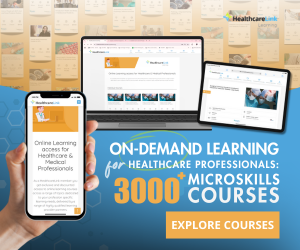Anaesthesia | Pain | Step I: Appropriate Clinical Use of Simple Analgesics
Step I: Appropriate Clinical Use of Simple Analgesics
Session Overview
Description
This session describes the effective and safe use of paracetamol and NSAIDs in the treatment of acute pain.
Learning Objectives
By the end of this session you will be able to:
- Define the basic methodology of clinical research in acute pain management
- State the risks/benefits of paracetamol and non-steroidal anti-inflammatory drugs (NSAIDs)
- Recognize the importance of choosing an appropriate route of administration
- Recognize how prescriptions need to differ in patient groups, e.g. children, the elderly
- Write appropriate prescriptions for simple analgesics alone, or in combination, or for opioid-sparing effect
Prerequisites
Before commencing this session you should:
- Have completed session Module 05a/Pharmacology Treatments/Step I: paracetamol - drug and mechanisms (001- 0508)
- Have completed session Module 05a/Pharmacology Treatments/Step I: NSAID drugs and mechanisms, side effects and contraindications (001-0509)
Paracetamol, non-steroidal anti-inflammatory drugs (NSAIDs) and cyclo-oxygenase 2 inhibitors (COXIBs, COX-2 inhibitors) are widely available ‘simple analgesics’.
They are used in the treatment of acute and chronic pain and are effective when used alone, in combination with each other or with opioids. Good analgesia without adverse effects requires prescriptions based upon their known pharmacology.
The pharmacology of these drugs is covered in the relevant sessions listed in Prerequisites. This session concentrates on the appropriate clinical use of these drugs.
Simple analgesics form the bottom rung of the World Health Organisation's 'Analgesic Ladder', and should thus be considered as a treatment for every patient in pain. In patients with moderate to severe pain, where simple analgesics alone may not be effective, the simple analgesics should be continued in addition to more powerful analgesics.
- Anaesthesia | Obstetrics | Body Composition and Gr...
- Posted By eIntegrity Healthcare e-Learning
- Posted Date: 2024-11-28
- Location:Online
- The session starts with an introduction to the concept of growth and development, and why this is important for paediatric anaesthesia pharmacology. This includes an important outline of what is ‘normal’. A key point of this session is for th
- Anaesthesia | Obstetrics | Anaesthesia in Early Pr...
- Posted By eIntegrity Healthcare e-Learning
- Posted Date: 2024-11-28
- Location:Online
- This session will describe the common risks to both mother and fetus that require surgery in early pregnancy. It will support the recognition of the potential pitfalls of anaesthetizing women in early pregnancy to ensure the safety of both the mother and
- Anaesthesia | Obstetrics | Breastfeeding and Anaes...
- Posted By eIntegrity Healthcare e-Learning
- Posted Date: 2024-11-28
- Location:Online
- This sessionprovides information for an anaesthetist to give to mothers about the benefits of breastfeeding, and the safety of drugs commonly prescribed in the perioperative period.
- Anaesthesia | Obstetrics | The Obese Mother
- Posted By eIntegrity Healthcare e-Learning
- Posted Date: 2024-11-28
- Location:Online
- The anaesthetic considerations and management of the obese parturient.
- Anaesthesia | Obstetrics | Venous Thromboembolism ...
- Posted By eIntegrity Healthcare e-Learning
- Posted Date: 2024-11-28
- Location:Online
- This session discusses the incidence, aetiology, pathophysiology, risk factors, prophylaxis and anaesthetic management of VTE in pregnancy.


